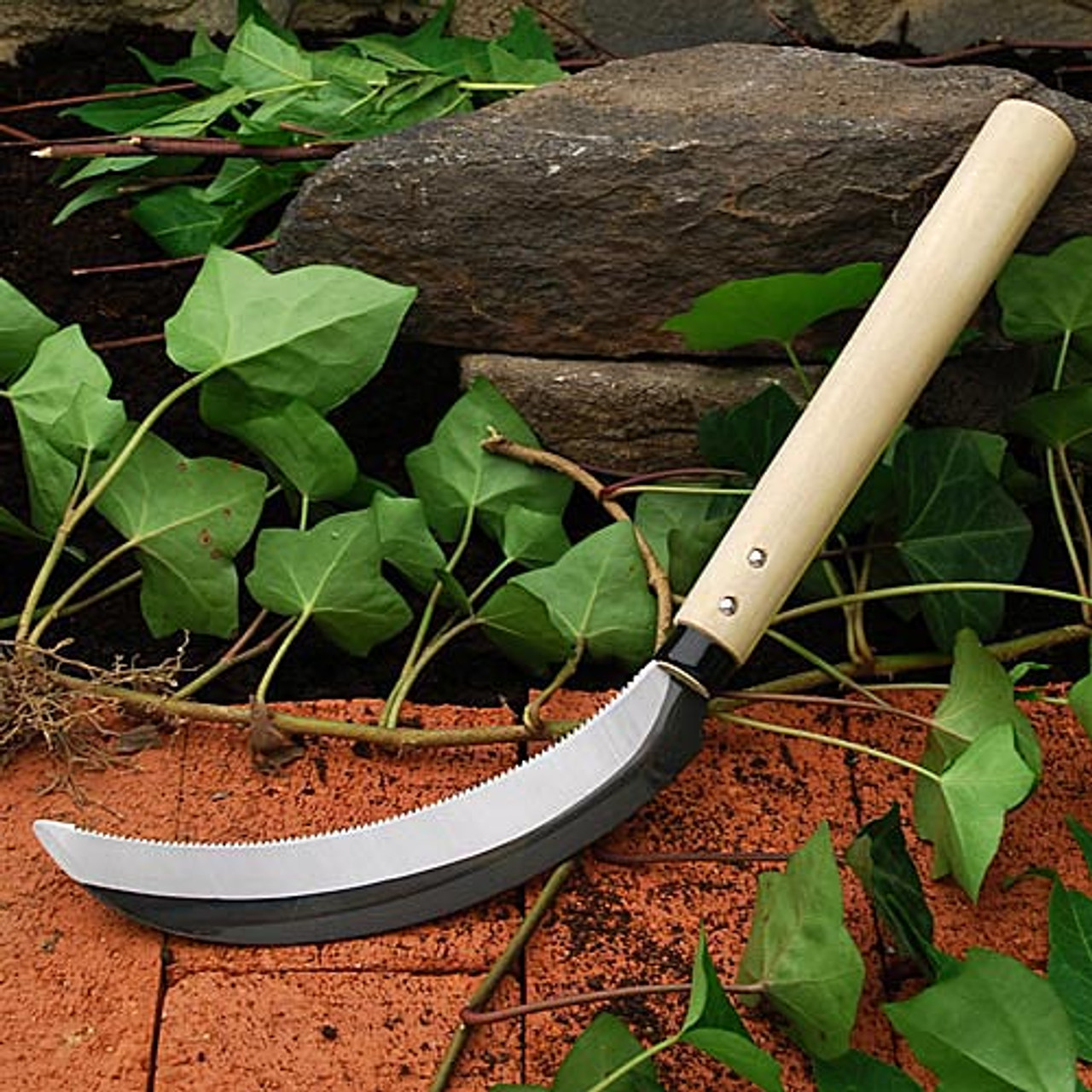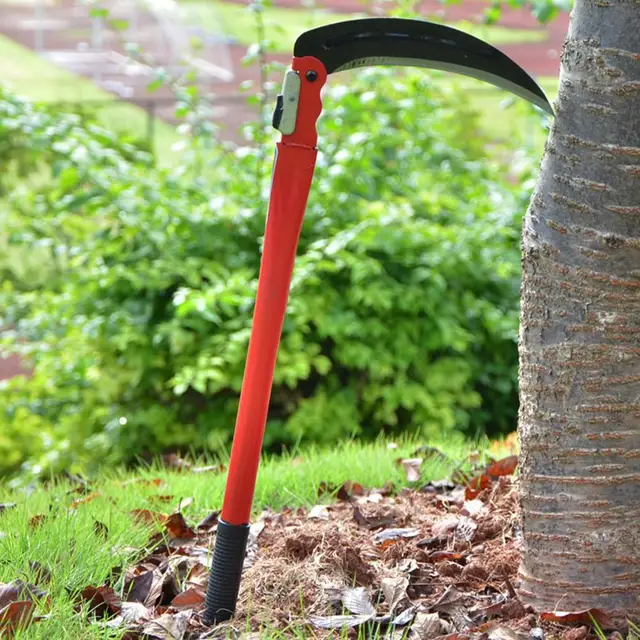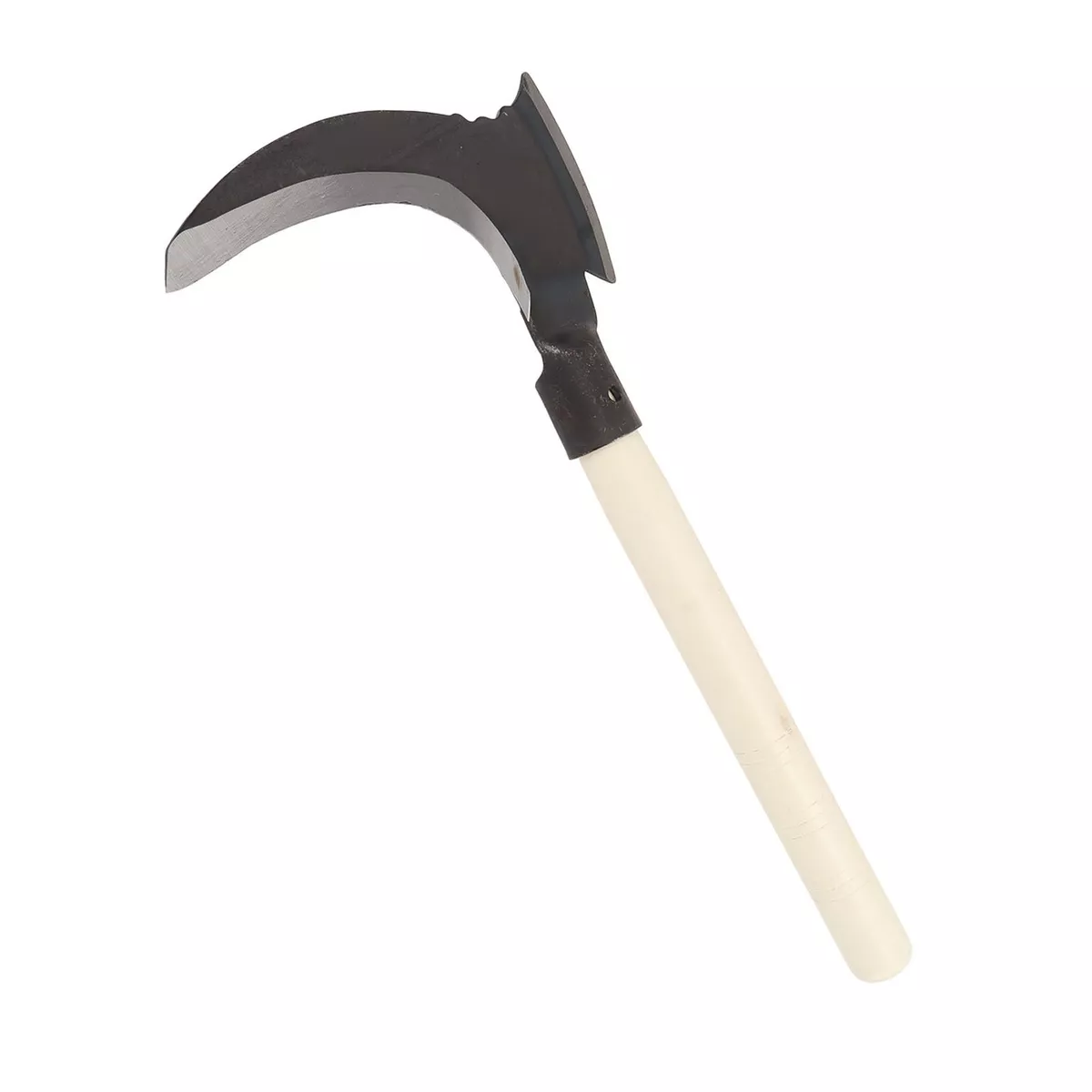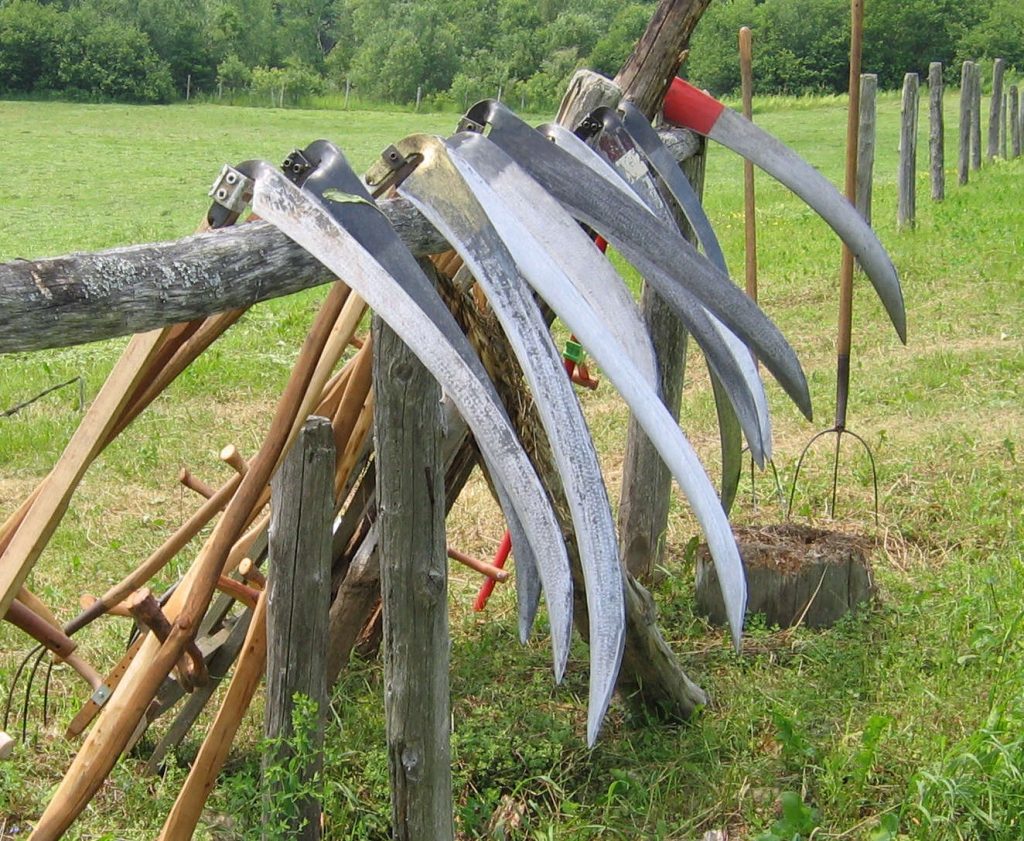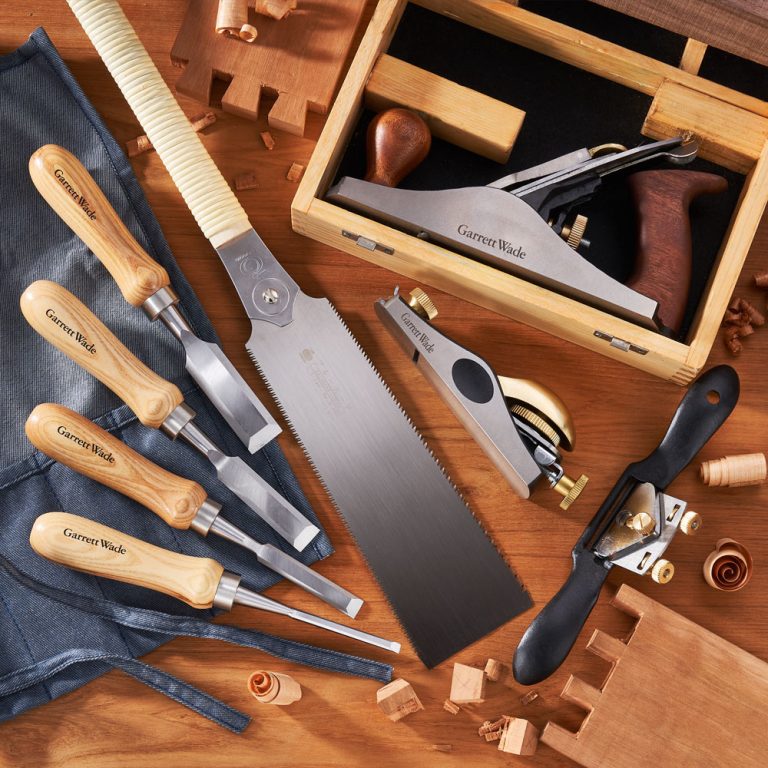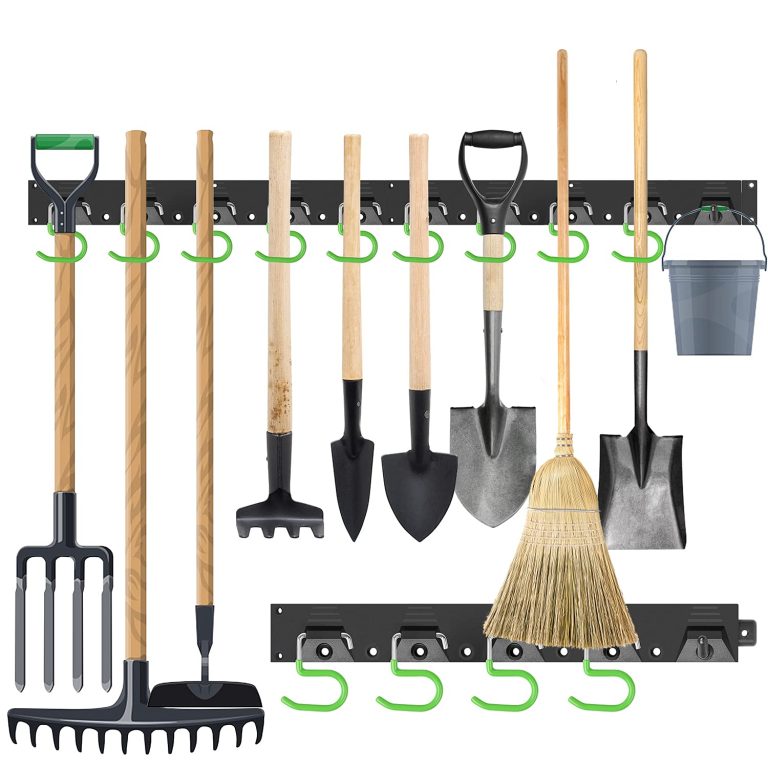Introduction
In a world dominated by modern machinery and power tools, the scythe stands as a testament to the enduring beauty of traditional craftsmanship. This graceful implement has graced gardens and meadows for centuries, offering a sustainable and eco-friendly approach to maintaining lush landscapes. This comprehensive guide delves into the rich history, versatility, and benefits of the scythe garden tool, providing insights to help you embrace this ancient art and elevate your gardening experience.
What is a Scythe Garden Tool?
A scythe is a traditional hand tool consisting of a curved blade mounted on a long, wooden handle or snath. It is primarily used for cutting grass, hay, or other vegetation with a sweeping motion, allowing for efficient and precise cutting without damaging the roots or soil. The scythe’s design has remained largely unchanged for centuries, a testament to its timeless effectiveness and simplicity.
The History of the Scythe
The origins of the scythe can be traced back to ancient civilizations, where it played a crucial role in agriculture and land management. From the fertile fields of ancient Egypt to the rolling meadows of medieval Europe, the scythe was an indispensable tool for harvesting crops and maintaining landscapes. Its elegant design and fluid motion have inspired artists and poets throughout history, cementing its status as a symbol of agrarian culture and harmony with nature.
The Benefits of Using a Scythe Garden Tool
Embracing the scythe in your gardening practices offers numerous advantages:
Eco-Friendly:
Unlike gas-powered mowers or trimmers, the scythe operates without fossil fuels, reducing your carbon footprint and promoting sustainable gardening practices.
Low-Impact:
The scythe’s gentle cutting motion preserves the health of the soil and surrounding plants, minimizing disturbance and protecting beneficial organisms.
Exercise and Mindfulness:
Using a scythe requires a rhythmic, full-body motion, providing a unique form of exercise that promotes mindfulness and a connection with nature.
Precise Cutting:
The curved blade allows for precise and controlled cutting, making it ideal for maintaining delicate or hard-to-reach areas of your garden.
Versatility:
With various blade styles and lengths, the scythe can be adapted for various tasks, from mowing lawns to trimming hedges or clearing brush.
Types of Scythe Garden Tools
The market offers a diverse range of scythe garden tools, each designed to cater to specific needs and preferences. Here are some of the most common types:
1. European-Style Scythes
European-style scythes are characterized by their long, slender blades and lightweight construction. These scythes are ideal for cutting grass and hay in larger areas, offering a smooth and efficient cutting motion. They are commonly used in meadows, hay fields, and large gardens.
2. American-Style Scythes
American-style scythes feature shorter, thicker blades and a more robust design. These scythes are well-suited for cutting denser vegetation, such as brush or tall weeds, and are often favored for their durability and versatility in various gardening tasks.
3. Bush Scythes
Bush scythes, also known as brush scythes, are designed specifically for clearing and maintaining overgrown areas. They feature shorter, curved blades that allow for precise cutting in tight spaces and around obstacles, making them ideal for managing dense vegetation or clearing hiking trails.
4. Grass Whips or Sickle Scythes
Grass whips, or sickle scythes, are compact and lightweight scythes that are perfect for trimming and edging lawns, borders, and garden beds. Their small size and maneuverability make them a valuable tool for detailed gardening work and maintaining neat edges.
5. Snath Options
The snath, or the long handle of the scythe, also comes in various materials and designs. Traditional wooden snaths offer a classic aesthetic, while modern options like aluminum or fiberglass provide lightweight and durable alternatives, catering to different user preferences and ergonomic needs.
Factors to Consider When Choosing a Scythe Garden Tool
To ensure you select the right scythe garden tool for your needs, consider the following factors:
- Intended Use: Determine the primary tasks you will be performing, such as mowing lawns, cutting hay, or clearing brush, as this will help you choose the appropriate blade style and size.
- Garden Size and Terrain: Evaluate the size and terrain of your garden or meadow, as larger areas may require longer blades, while smaller or more intricate spaces may benefit from shorter, more maneuverable options.
- User Height and Strength: Consider your height and physical strength when selecting the scythe’s snath length and overall weight, ensuring a comfortable and efficient cutting motion.
- Blade Material: Opt for high-quality blade materials like tempered steel or carbon steel, which offer durability and maintain a sharp edge for precise cutting.
- Ergonomics: Look for scythes with ergonomic handles or grips that minimize hand fatigue and provide a secure and comfortable grip during extended use.
Proper Use and Maintenance of Scythe Garden Tools
To ensure the longevity and optimal performance of your scythe garden tool, follow these guidelines:
- Read and follow the manufacturer’s instructions carefully, paying attention to proper technique and safety precautions.
- Sharpen the blade regularly using a specialized scythe sharpening stone or file, ensuring a keen edge for efficient cutting.
- Clean and lubricate the blade and moving parts after each use to prevent rust and corrosion.
- Store the scythe in a dry, protected area when not in use, and consider investing in a storage rack or wall mount to prevent damage and promote organization.
- Use proper protective gear, such as gloves, sturdy footwear, and eye protection, to ensure safe operation.
- Start with shorter cutting sessions and gradually build up your endurance to avoid strain or fatigue.
Incorporating the Scythe into Your Gardening Routine
The scythe can be seamlessly integrated into various aspects of your gardening routine, including:
Lawn Mowing:
Embrace the traditional art of scything for maintaining your lawn, creating a beautiful, natural aesthetic while promoting sustainable practices.
Meadow and Field Maintenance:
Preserve the natural beauty of meadows and hay fields by using a scythe to gently cut and maintain the vegetation, protecting delicate wildflowers and ecosystems.
Brush Clearing:
Utilize a bush scythe to clear and maintain overgrown areas, creating pathways or opening up spaces for new garden beds or landscaping projects.
Edging and Trimming:
Employ a grass whip or sickle scythe for precision edging and trimming around garden beds, borders, and pathways, achieving a neat and well-groomed appearance.
Therapeutic Gardening:
Engage in the rhythmic and meditative practice of scything as a form of therapeutic gardening, promoting mindfulness, exercise, and a deeper connection with nature.
Conclusion
In the ever-evolving landscape of gardening, the scythe garden tool stands as a timeless reminder of our connection to the natural world. This elegant and eco-friendly implement offers a sustainable and mindful approach to maintaining lush landscapes, combining practicality with artistry and tradition.
By understanding the various types of scythe garden tools, their applications, and proper usage techniques, you can embark on a journey of rediscovery, embracing the ancient art of scything and cultivating a deeper appreciation for the beauty of traditional craftsmanship.
Incorporate the scythe into your gardening routine, and experience the therapeutic benefits of its rhythmic motion, the satisfaction of precise cutting, and the joy of preserving the delicate balance of nature. With each sweep of the blade, you’ll not only maintain your garden’s splendor but also foster a connection to the rich heritage of agrarian culture.
So, embrace the timeless elegance of the scythe garden tool, and let it guide you on a path of mindfulness, sustainability, and a deeper reverence for the natural world that surrounds us.
